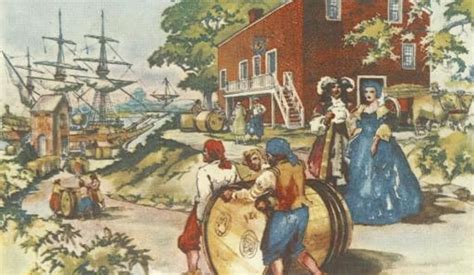Introduction

The headright system was a method of land distribution used in the English colonies in North America during the 17th and 18th centuries. Under this system, individuals who immigrated to the colonies and met certain requirements were granted a certain amount of land. The system played a significant role in the settlement and development of the American colonies.
Definition
A headright is a unit of land granted to a person who immigrates to a new colony and meets certain requirements. The term “headright” derives from the idea that each person who immigrated to the colonies was entitled to a certain amount of land, known as a “headright.”
History of the Headright System
The headright system was first implemented in the English colony of Virginia in 1618. The Virginia Company, which oversaw the colony’s settlement, granted 50 acres of land to anyone who paid their own passage to Virginia or who paid the passage of another person. This system was designed to encourage immigration and settlement in the colony.
The headright system was later adopted by other English colonies in North America, including Maryland, Pennsylvania, and Georgia. Each colony had its own specific requirements for obtaining a headright, but the general principle remained the same: individuals who met certain criteria were granted a certain amount of land.
Requirements for Obtaining a Headright
The requirements for obtaining a headright varied from colony to colony. However, some common requirements included:
- Paying one’s own passage to the colony
- Paying the passage of another person
- Being a male over the age of 21
- Being a member of a certain religion
- Serving in the military
Amount of Land Granted
The amount of land granted under the headright system also varied from colony to colony. In Virginia, each individual was granted 50 acres of land. In Maryland, the amount of land granted was based on the number of people brought to the colony: 50 acres for the headright holder and 50 acres for each additional person.
Benefits of the Headright System
The headright system provided several benefits, including:
- Encouraged immigration and settlement
- Promoted the development of the colonies
- Helped to establish a landowning class
- Created a sense of economic opportunity
Drawbacks of the Headright System
The headright system also had some drawbacks, including:
- Led to speculation and fraud
- Resulted in the concentration of land ownership in the hands of a few individuals
- Could lead to conflicts with Native American tribes
Decline of the Headright System
The headright system declined in popularity in the 18th century as other methods of land acquisition, such as land purchases and land grants, became more common. However, the system had a lasting impact on the development of the American colonies and the distribution of land ownership in the United States.
Tips and Tricks
Here are some tips and tricks for obtaining a headright:
- Research the requirements for obtaining a headright in the colony you are interested in.
- Make sure you meet all of the requirements before applying for a headright.
- Keep a copy of your application and all documentation you submit.
- Be patient. The process of obtaining a headright can take some time.
Pros and Cons
Pros
- Encouraged immigration and settlement
- Promoted the development of the colonies
- Helped to establish a landowning class
- Created a sense of economic opportunity
Cons
- Led to speculation and fraud
- Resulted in the concentration of land ownership in the hands of a few individuals
- Could lead to conflicts with Native American tribes
FAQs
- What is a headright? A headright is a unit of land granted to a person who immigrates to a new colony and meets certain requirements.
- Who was eligible for a headright? The requirements for obtaining a headright varied from colony to colony, but some common requirements included being a male over the age of 21, paying one’s own passage to the colony, or serving in the military.
- How much land was granted under the headright system? The amount of land granted under the headright system varied from colony to colony. In Virginia, each individual was granted 50 acres of land. In Maryland, the amount of land granted was based on the number of people brought to the colony.
- What were the benefits of the headright system? The headright system provided several benefits, including encouraging immigration and settlement, promoting the development of the colonies, helping to establish a landowning class, and creating a sense of economic opportunity.
- What were the drawbacks of the headright system? The headright system also had some drawbacks, including leading to speculation and fraud, resulting in the concentration of land ownership in the hands of a few individuals, and potentially leading to conflicts with Native American tribes.
- When did the headright system decline? The headright system declined in popularity in the 18th century as other methods of land acquisition, such as land purchases and land grants, became more common.
